Input interpretation

D-alpha-tocopherol
Chemical names and formulas
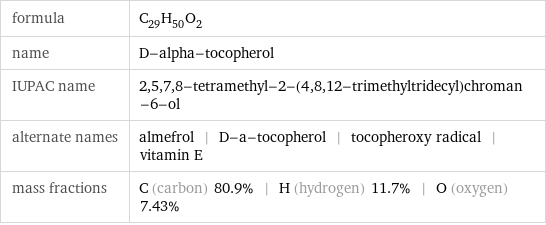
formula | C_29H_50O_2 name | D-alpha-tocopherol IUPAC name | 2, 5, 7, 8-tetramethyl-2-(4, 8, 12-trimethyltridecyl)chroman-6-ol alternate names | almefrol | D-a-tocopherol | tocopheroxy radical | vitamin E mass fractions | C (carbon) 80.9% | H (hydrogen) 11.7% | O (oxygen) 7.43%
Lewis structure
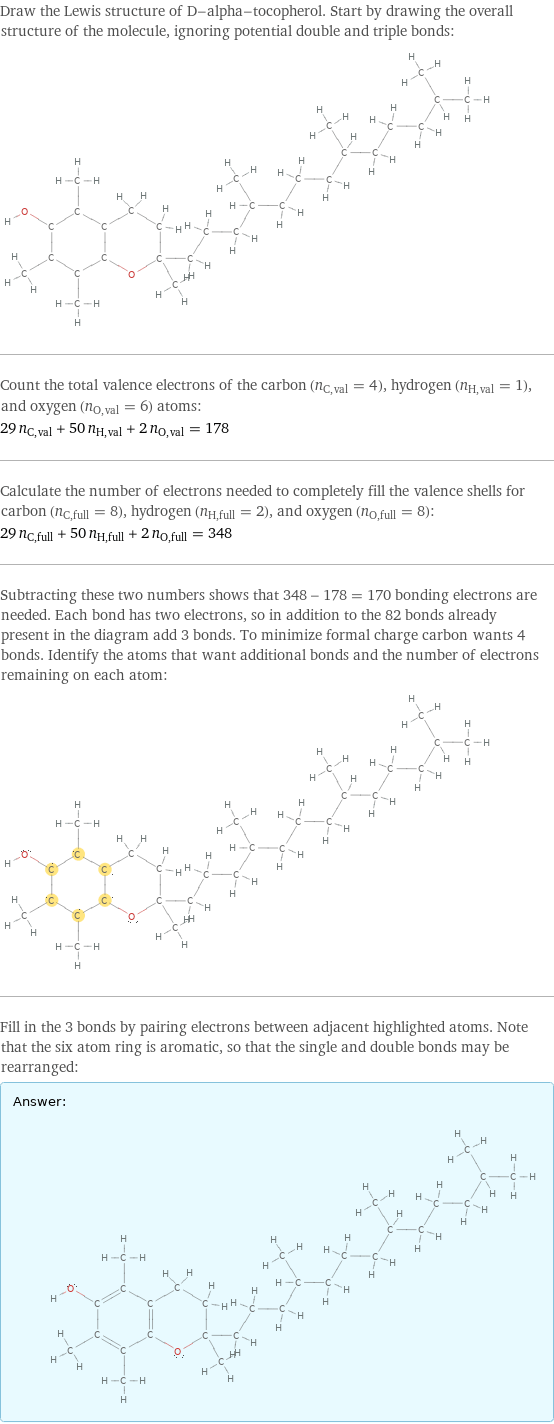
Draw the Lewis structure of D-alpha-tocopherol. Start by drawing the overall structure of the molecule, ignoring potential double and triple bonds: Count the total valence electrons of the carbon (n_C, val = 4), hydrogen (n_H, val = 1), and oxygen (n_O, val = 6) atoms: 29 n_C, val + 50 n_H, val + 2 n_O, val = 178 Calculate the number of electrons needed to completely fill the valence shells for carbon (n_C, full = 8), hydrogen (n_H, full = 2), and oxygen (n_O, full = 8): 29 n_C, full + 50 n_H, full + 2 n_O, full = 348 Subtracting these two numbers shows that 348 - 178 = 170 bonding electrons are needed. Each bond has two electrons, so in addition to the 82 bonds already present in the diagram add 3 bonds. To minimize formal charge carbon wants 4 bonds. Identify the atoms that want additional bonds and the number of electrons remaining on each atom: Fill in the 3 bonds by pairing electrons between adjacent highlighted atoms. Note that the six atom ring is aromatic, so that the single and double bonds may be rearranged: Answer: | |
3D structure
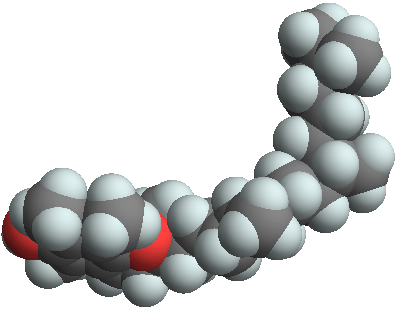
3D structure
Basic properties
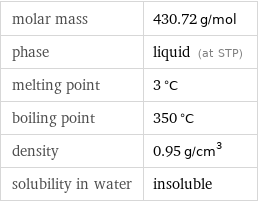
molar mass | 430.72 g/mol phase | liquid (at STP) melting point | 3 °C boiling point | 350 °C density | 0.95 g/cm^3 solubility in water | insoluble
Units

Liquid properties (at STP)

density | 0.95 g/cm^3 vapor pressure | 8×10^-12 mmHg (at 25 °C) refractive index | 1.5045
Units

Thermodynamic properties

molar heat of vaporization | 83.5 kJ/mol specific heat of vaporization | 0.194 kJ/g (at STP)
Chemical identifiers
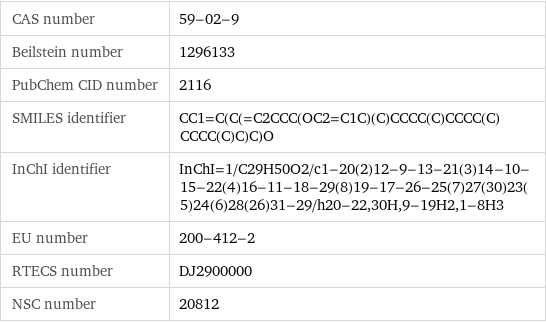
CAS number | 59-02-9 Beilstein number | 1296133 PubChem CID number | 2116 SMILES identifier | CC1=C(C(=C2CCC(OC2=C1C)(C)CCCC(C)CCCC(C)CCCC(C)C)C)O InChI identifier | InChI=1/C29H50O2/c1-20(2)12-9-13-21(3)14-10-15-22(4)16-11-18-29(8)19-17-26-25(7)27(30)23(5)24(6)28(26)31-29/h20-22, 30H, 9-19H2, 1-8H3 EU number | 200-412-2 RTECS number | DJ2900000 NSC number | 20812
Safety properties

flash point | 210 °C
Toxicity properties

RTECS classes | mutagen | reproductive effector